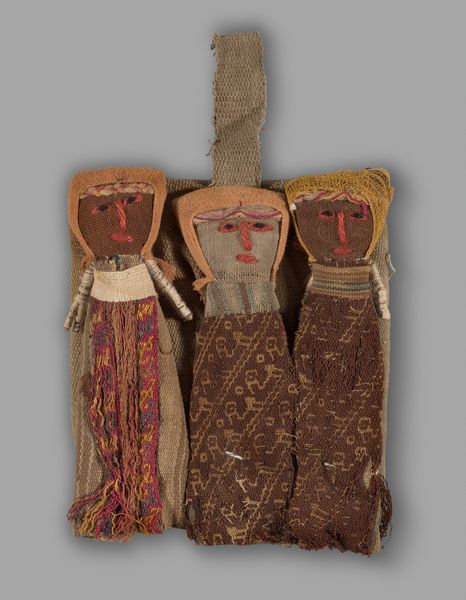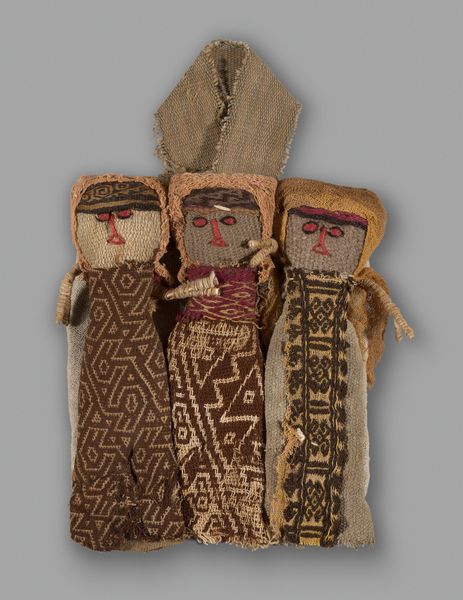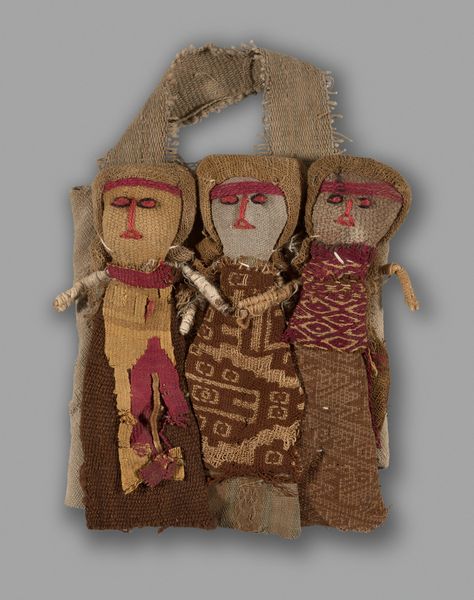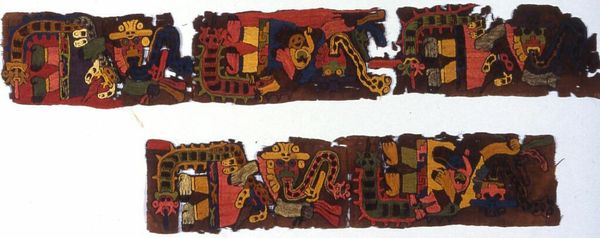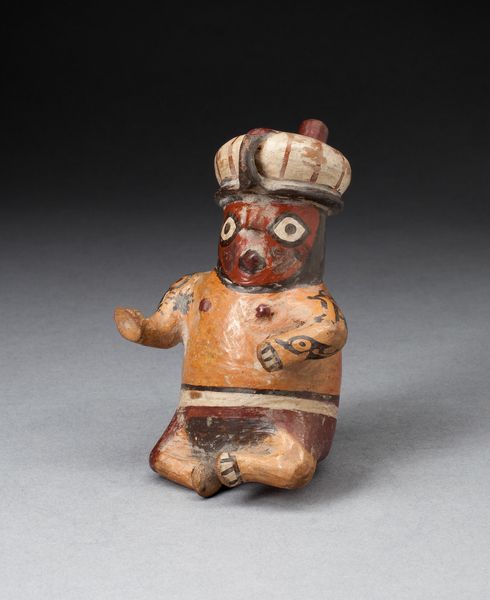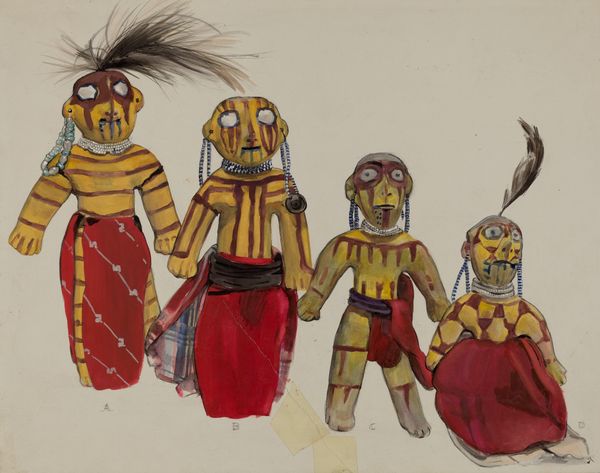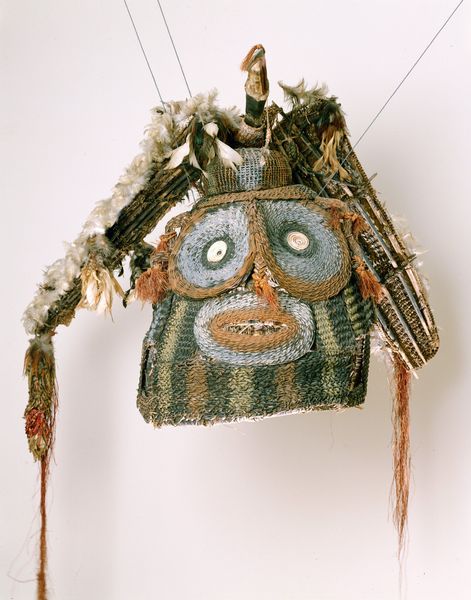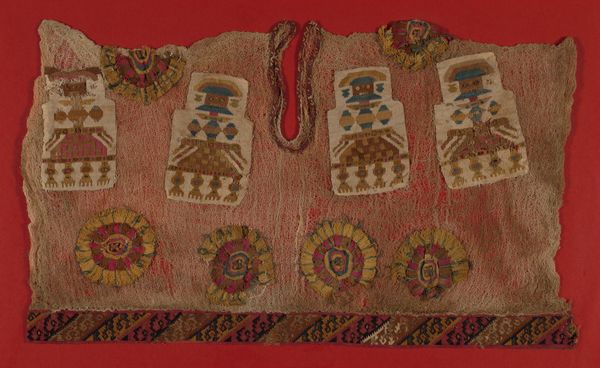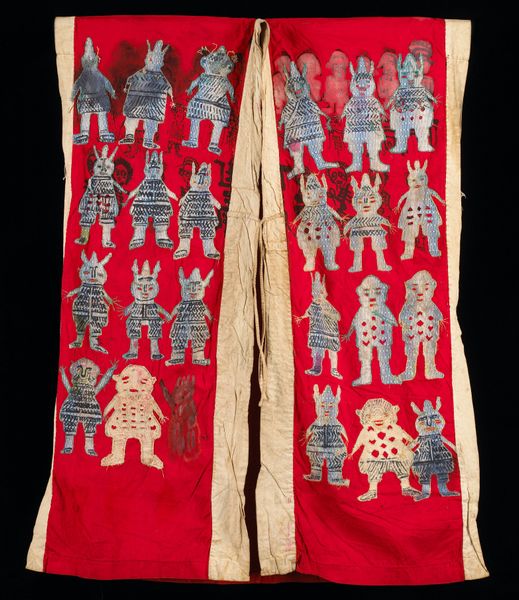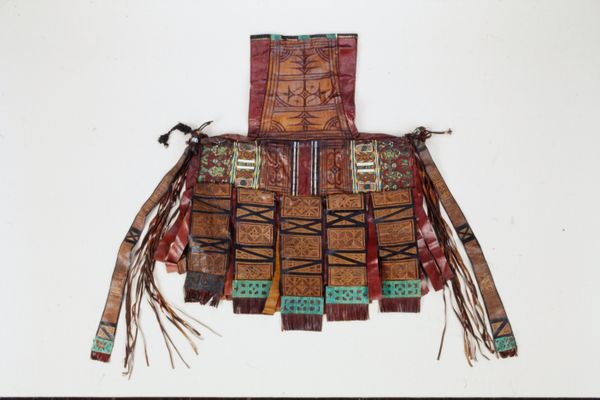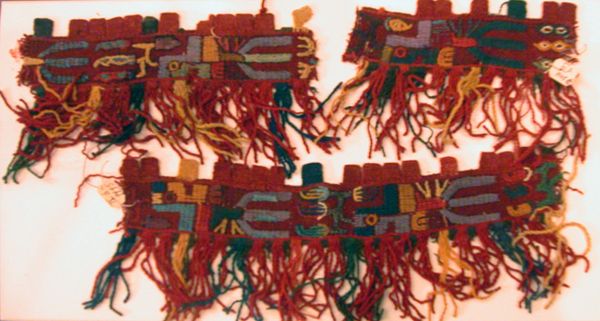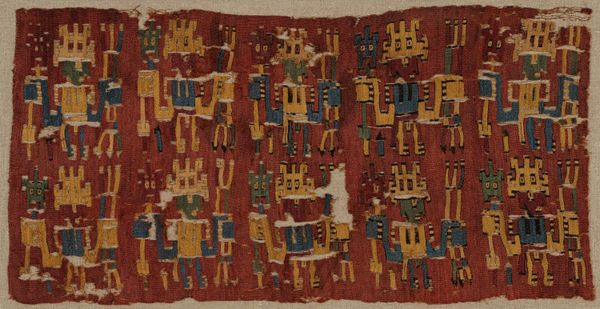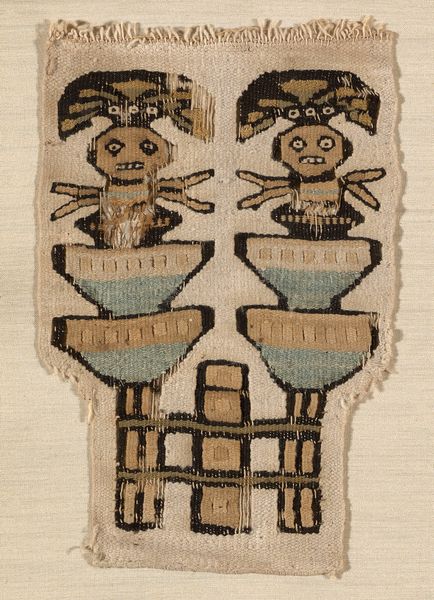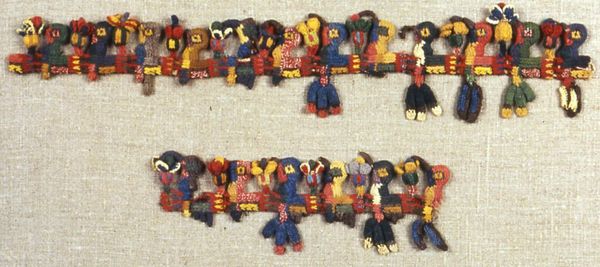
textile
#
textile
#
figuration
#
indigenous-americas
Dimensions: a: 6.4 × 5.7 cm (2 1/2 × 2 1/4 in.) b: 6.4 × 5.7 cm (2 1/2 × 2 1/4 in.) c: 6.4 × 8.9 cm (2 1/2 × 3 1/2 in.) d: 6.7 × 8.3 cm (2 5/8 × 3 1/4 in.) e: 6.4 × 13 cm (2 1/2 × 5 1/8 in.) f: 6.4 × 13 cm (2 1/2 × 5 1/8 in.) g: 6.4 × 4.5 cm (2 1/2 × 1 3/4 in.) h: 6.4 × 4.1 cm (2 1/4 × 1 5/8 in.)
Copyright: Public Domain
These are the 'Warrior Fragments' made by the Nazca people of ancient Peru. Created from painted cloth, these small figures offer us a glimpse into their society and beliefs, though, as fragments, the complete picture remains elusive. These figures, likely once part of larger compositions, showcase warriors with distinct attire and weaponry. The level of detail in their clothing and adornments suggests a hierarchical society where status and role were visually communicated. The cloth material itself speaks to the advanced textile techniques of the Nazca, a culture renowned for their weaving and dyeing skills. Living in a desert environment, the Nazca people developed complex irrigation systems, and warfare may have played a role in controlling resources. Analyzing the iconography, burial sites, and surviving infrastructure helps to contextualize the warrior figures in the context of their social and political world. Understanding the complete story of these fragments demands interdisciplinary research, bringing together archaeology, art history, and ethnography. By studying these fragments and their cultural context, we get closer to understanding the social structure of the Nazca people.
Comments
No comments
Be the first to comment and join the conversation on the ultimate creative platform.
